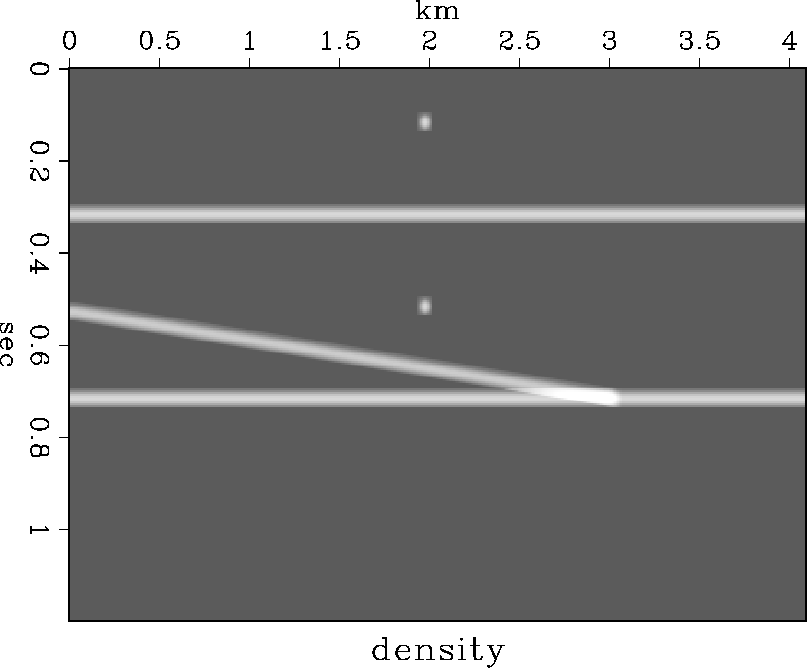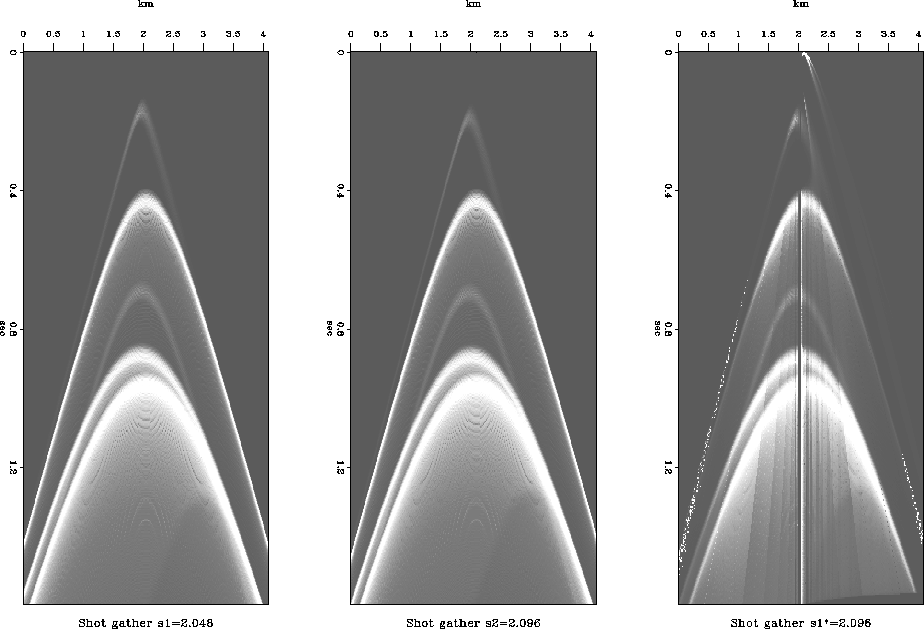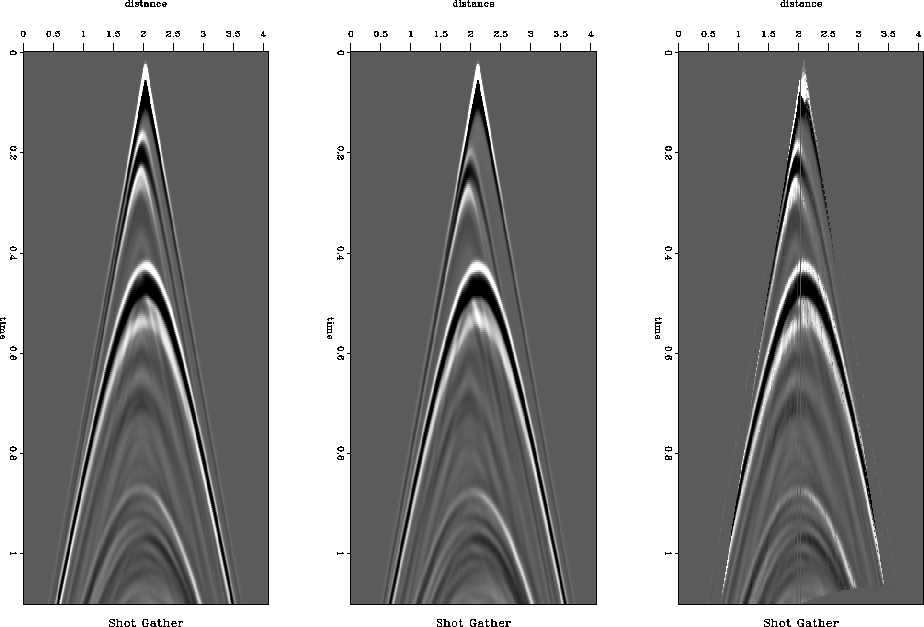|
refl
Figure 2 Input subsurface model. The model is used for modeling shot gathers. The geophones are at fixed surface locations, but the shot positions vary. |  |
Having recorded a shot gather at shot location s1, a geophysicist could ask himself what he would have recorded laying out a slightly different shot gather with shot location s2. The process introduced in this paper provides an answer by shifting a given shot gather s1 along the profile line assuming a constant velocity subsurface.
Figure 2 depicts a simple subsurface model comprising two horizontal layers, one dipping layer, and two diffractors.
|
refl
Figure 2 Input subsurface model. The model is used for modeling shot gathers. The geophones are at fixed surface locations, but the shot positions vary. |  |
The left and middle frame of Figure 3 show the result of a simple Kirchhoff modeling corresponding to shots at surface positions s1=2.048 km and s2=2.096 km. The geophone locations are identical in both shots. The third frame shows the output of the shot continuation process after shifting shot s1 to the location of s2. If you press the pushbutton in the electronic document accompanying this report, a movie illustrates the success of the shift: while the screen switches rapidly switching between the two original shot gather frames, the reflections from the horizontal layers move sideways and the hyperbolae corresponding to the diffractor move vertically. In comparison, the events do not move when the movie alternates between the continued shot gather and the shot gather s2 recorded at that location.
Figure 4 is based on the same subsurface model as the previous shot gather set (Figure 2). A more sophisticated finite difference code modeled the shots using a Ricker source wavelet and including not only reflections but also a direct wave and multiples. Even having primarily been designed to handle reflection hyperbolae correctly, the shot continuation algorithm succeeds in shifting more complex gathers.
The nearly vertical lines in the shifted shot are artifacts of the operator. As I discuss in the paragraph `Operator', I believe them to be connected with the special case of reciprocal raypath. Furthermore, the subroutine computing the amplitude along my operator requires an aperture cut off, which is manifested by the disappearance of the flanks of the earliest hyperbola.
The shifted shot profiles show a wedge of zero data at the right bottom corner. This wedge contrasts with the strong arrival of the two deeper layers in shot s2 at this position. The missing event is readily explained by observing that the original shot gather s1 does not include reflections from the reflector points at the far right of the model. Since the shot location s1 lies to the left of shot location s2, reflections from the far right of the model just arrive within s2's recording window, but are not recorded in the shot gather s1. In general, the continued shot only includes reflections from the subsurface illuminated by both shots.
 |
 |